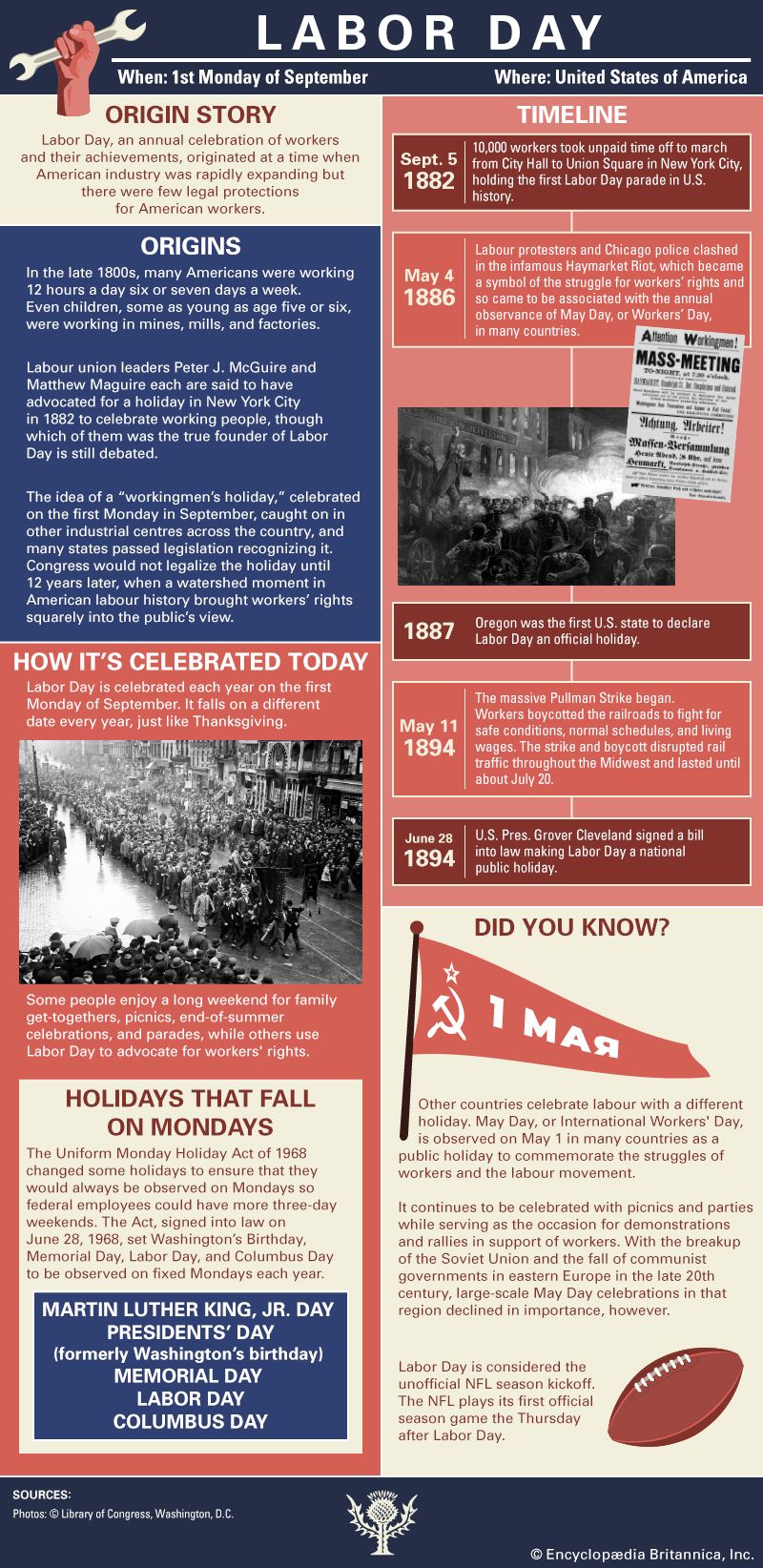Labor Day
Our editors will review what you’ve submitted and determine whether to revise the article.
- Related Topics:
- United States
- holiday
- September
When is Labor Day?
What is the purpose of Labor Day?
Where did Labor Day come from?
What is Labor Day weekend?
What is the difference between Labor Day and May Day?
Labor Day, in the United States and Canada, holiday (first Monday in September) honouring workers and recognizing their contributions to society. In many other countries May Day serves a similar purpose.
In the United States, Peter J. McGuire, a union leader who had founded the United Brotherhood of Carpenters in 1881, is generally given credit for the idea of Labor Day. In 1882 he suggested to the Central Labor Union of New York that there be a celebration honouring American workers. On September 5 some 10,000 workers, under the sponsorship of the Knights of Labor, held a parade in New York City. There was no particular significance to the date, and McGuire said that it was chosen because it fell roughly halfway between the Fourth of July holiday and Thanksgiving. In 1884 the Knights of Labor adopted a resolution that the first Monday in September be considered Labor Day. The idea quickly spread, and by the following year Labor Day celebrations were being held in a number of states. Oregon became the first state, in 1887, to grant legal status to the holiday (although the state initially celebrated it on the first Saturday in June). That same year Colorado, New York, Massachusetts, and New Jersey established the holiday on the first Monday in September, and other states soon followed. In 1894 the Pullman strike in Illinois, as well as a series of unemployed workers’ riots on May Day in Cleveland, prompted U.S. Pres. Grover Cleveland to propose a bill that would make Labor Day a national public holiday. The bill, which was crafted in part to deflect attention from May Day (an unofficial observance rooted in socialist movements), was signed into law in June of that year.
Over the years, particularly as the influence of unions waned, the significance of Labor Day in the United States changed. For many people it became an end-of-summer celebration and a long weekend for family get-togethers. At the same time, it has continued to be celebrated with parades and speeches, as well as political rallies, and the day is sometimes the official kickoff date for national political campaigns.

In Canada the first parades of workers were held in 1872 in Ottawa and Toronto, and later in that year the law making labour unions illegal was repealed. McGuire was invited to speak at the celebration in 1882. In 1894 Parliament officially recognized the holiday in Canada.
Most other countries honour workers on May Day (May 1). The day was a major holiday in communist countries, and it continues to be important where left-wing political parties and labour movements wield influence.






















